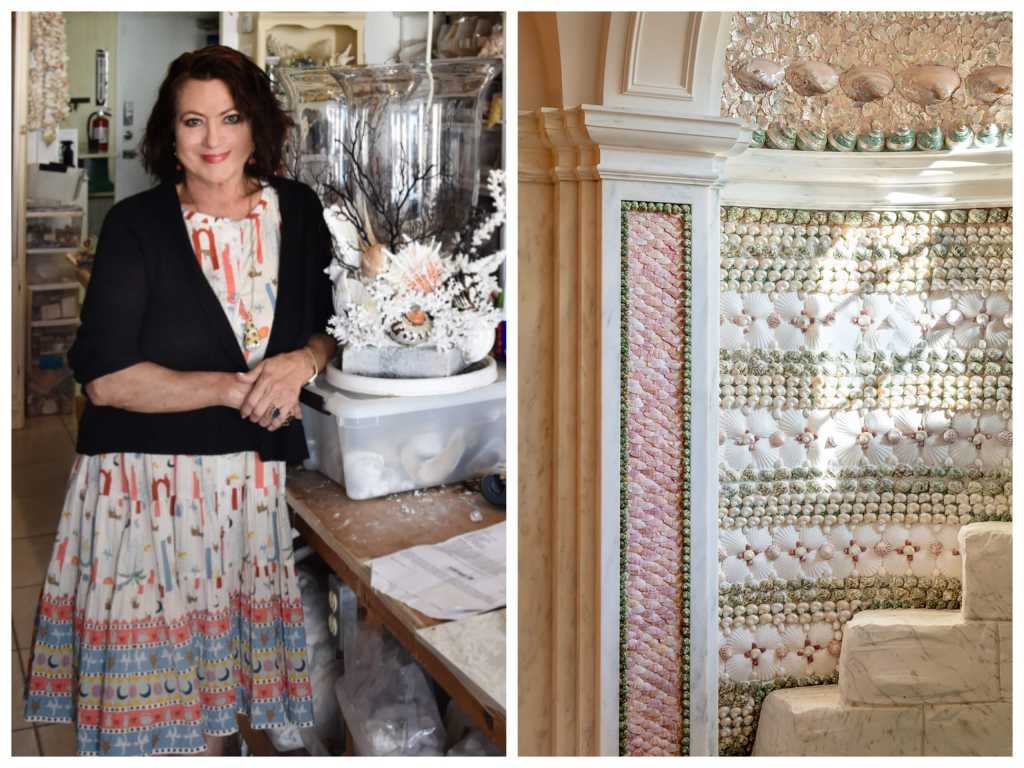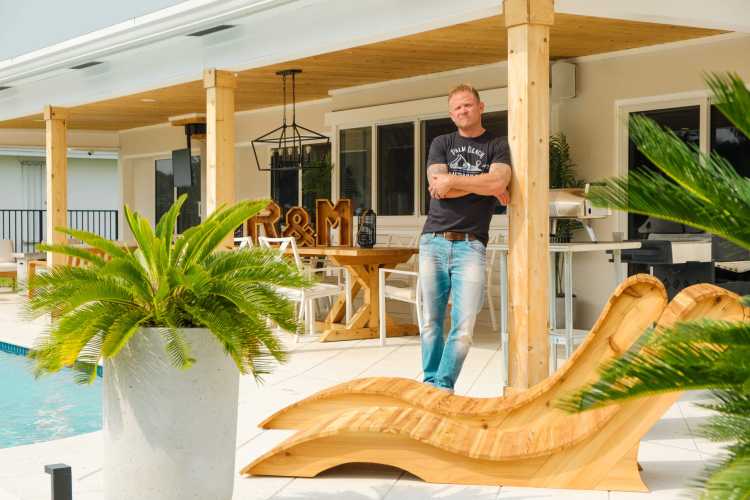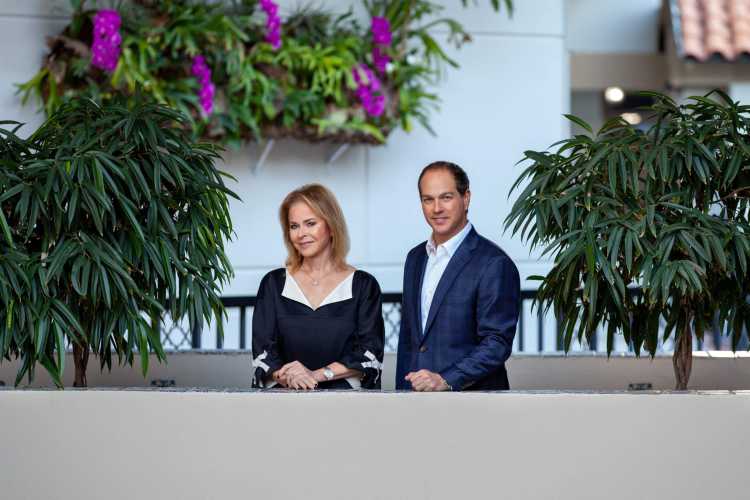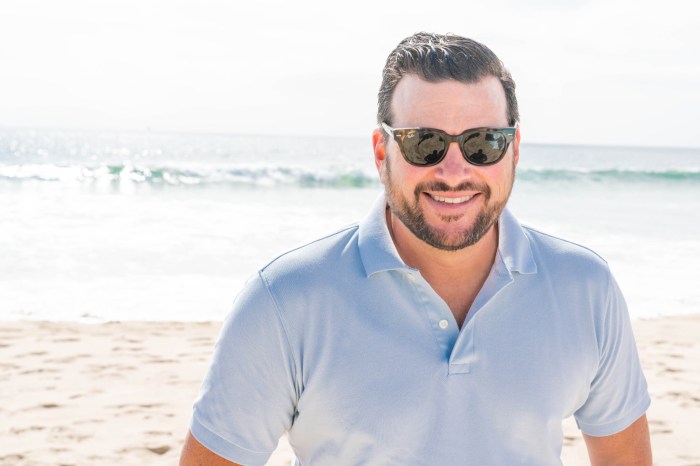Start talking about seashells and the classic nursery rhyme, “She Sells Seashells,” comes to mind. It is said that a renowned paleontologist and fossil collector, Mary Anning, inspired Terry Sullivan to write the tongue-twister. Though her work is from child’s play, Christa Wilm could inspire a modern tale.
Wilm has taken seashell art to another level, weaving marine mollusks into the backdrops of homes located in Palm Beach, along the East Coast and even abroad in France, Italy and Switzerland, and in hotels, such as The Breakers on Palm Beach and Faena Miami Beach.
Wilm is a self-described “natural collector,” who has always had an interest in fossils. She has studied archaeology and is a former antiques dealer with a good eye, so it was a seamless transition when she began creating seashell art more than 20 years ago.
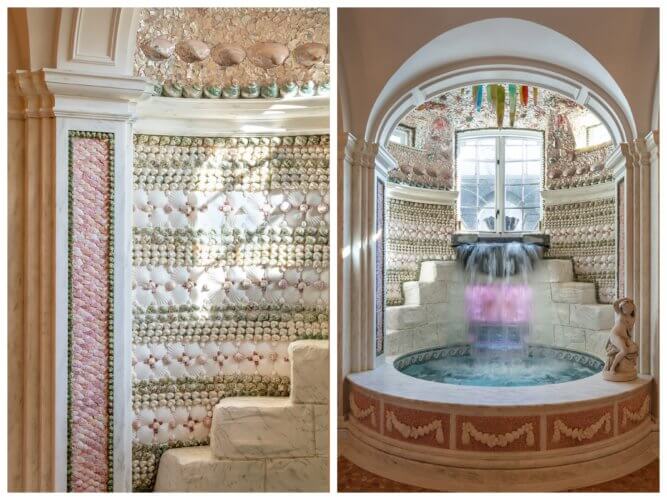
From her studio in West Palm Beach, she fashions high-quality, often functional seashell art. She also masterminds custom, intricate and unusual seashell pieces, fabricating furniture and fitted wall panels, even ceilings, all while working with a bevy of acclaimed designers and architects.
Wilm’s seashell empire came about as a happy accident. A friend was visiting from Denver, Colorado, but was not greeted with Florida sunshine. “It was raining and bleak every day and my friend was getting sour,” she recalls. Her partner in the antique shop had an idea to occupy their time indoors: He cut out a couple of mirrors, had them buy seashells at a local souvenir shop and then had them create beachy frames for the mirrors.
Customers noticed the seashell mirrors. “Everybody went kind of nuts,” Wilm says with a laugh, “because seashells were out. Nobody did seashells back then. I started the old seashell thing again,” she says.
She started collecting seashells, eventually buying from estates, and purchasing objects at an auction that she could encrust.
“Each time I would start encrusting something, it sold before it was even finished,” she recalls of the early days. Soon her antique shop was carrying lots of items. “It just started getting bigger and bigger and it grew from there.”
Custom orders followed. One customer wanted a candelabra done and it came out so well she bought some more and “dressed them up.” Bookends, cigar boxes, hurricane lanterns, sconces — she has an eye for how to make the shapes of the seashells fit with the item’s form. About five years ago, she added fine jewelry using seashells to the mix.
The seashells that she normally uses, whether bivalves or univalves, have been collected by divers. “They’re not ones that wash up on the beach, although I love those seashells and I do, when I get a chance, collect some of those and put them in some of my work. Some of the jagged and crusty ones that I have, I love. I’ve seen so many perfect shells over the years now, I like the jagged crusty ones that have the little barnacles growing on them.”

Wilm has developed relationships with a handful of importers. Depending on the project and specifications, she could be using hundreds, if not thousands of shells. She uses a variety of shells — some nautilus shells are as little as four inches, some are 2-feet by 3-feet. Pectens, (a kind of scallop) are great for covering a large space that needs to be flat. Oyster shells are very on- trend now. “In general I like to mix shells. I use a lot of snails, a lot of bivalves. Snails are just beautiful for mirrors and things.”
“Some are the companies that everybody buys from and some of them aren’t. Some of them are quite special and are so kind — they actually help me handpick corals. If I’m doing a job, I often need pairs of things.”
Sadly, half the world’s coral is dead, Wilm explains. Everything imported has to be approved through the Convention on International Trade in Endangered Species of Wild Fauna and Flora and the guidelines are strict. When it comes to the corals, for instance, “If I have to, I can tell you from the cradle to the grave where that coral has really been.”
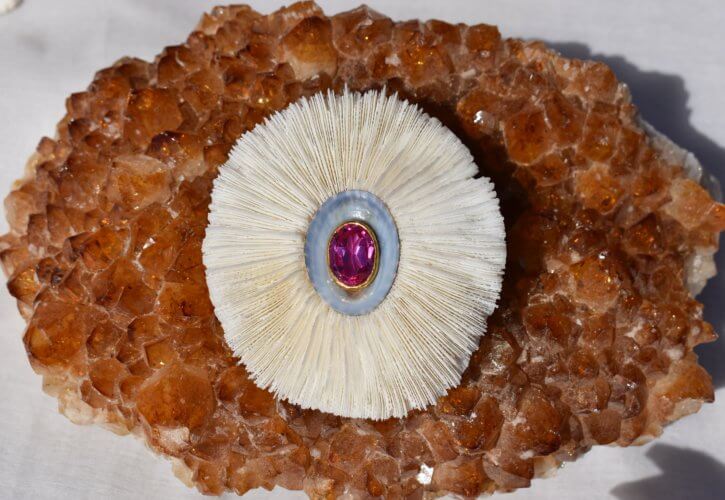
Her sources are vast. She loves attending the Tucson Gem and Mineral Show, the largest, oldest and most prestigious gem and mineral show in the world. “All the fabulous things that come out of the earth are at that show,” she says.
Wilm hails from Denver. “I was kind of a weird kid. I always brought home bird’s nests and little bones and feathers and stuff like that,” she remembers. “I love fossils and I sewed myself this kind of weird big leather bag that I used to cart around in high school and put my finds in. I had favorite little rocks that were with me all the time.”
She ended up getting a degree in journalism from the University of Missouri and went on to work as a press secretary and television producer in Washington, D.C. during the Reagan years. Because of her interest in natural history, she has taken lots of archaeology courses, even one at Harvard when she later lived in Boston.
When she moved down to Florida and was having her son, she decided to transition from a career in real estate to antiques. Her aunt had been in the business for many years in Chicago and had a dealership that was one of the biggest west of the Mississippi, which helped her and her partner get started. Christa’s South Antiques “ended up being one of the nicest antique dealers, shops on Antique Row,” she says.

The shop evolved over time and when Wilm began creating with seashells, the name changed to Christa’s South Antiques and Seashells. “Then came 2008, and antiques went right out the window,” she says. “So we quit carrying antiques and it became Christa’s South Seashells.”
It was open for more than 25 years, until she decided to close the doors about five years ago.
She found the retail side “was eating up all of my time” and she had no time to create. Her current studio, open by appointment only, is located on Belvedere Road, right around the corner from West Palm Beach’s Antique Row.
She also sells items on Chairish.com, the online marketplace for unique and one-of-a-kind furniture, art and home decor. As one might imagine, “My stuff is not fun to ship,” she says with a laugh.
Items currently range from $8,500 for an eight-light chandelier to $670 for a contemporary miniature shell-encrusted Hygiea head. (She buys cast marble heads and busts from Greece).
The largest project she has undertaken was on Bellevue Avenue in Newport for Ron Fleming, a town planner and preservationist, who wanted to create a grotto underneath a library in a historic home. The nymphaeum has a swim-through to the outdoor pool from a spa and Wilm used thousands of seashells for the project.
“All the walls and the ceiling, I did all in pink seashells and pearl seashells and pink quartz,” she explains. “And the front, the front big tub, has a half-round wall behind it with a fountain and we did all the walls in the seashells. Then we did all the columns that are around the spa area we did in beautiful little Japanese tellins — pink ones. It was just all hand-picked and it took us months and months and months, and we had to fly up and do a lot of it on site.”
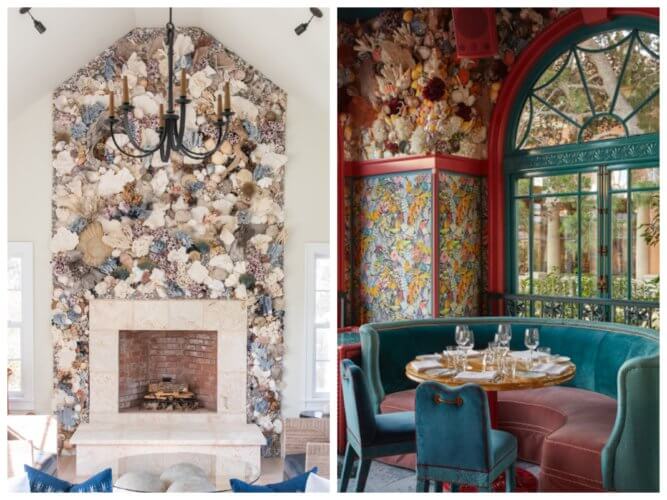
Most of Wilm’s work is done from her studio, even large-scale pieces. Right before the pandemic began, she installed 30 seashell-covered panels for the Mayfair Supper Club at the Bellagio Hotel in Las Vegas, designed by the noted architect Martin Brudnizki. The main part of the work is done on panels – some flat wooden panels and some mesh, similar to how a mosaic is made. Once in Las Vegas, “it takes some guts to install,” she admits, but the panels are also not as delicate as one might think. Several varieties of marine epoxy are used to keep the shells stuck on.
“Since I started doing this, seashell artists have popped up all over the place,” she says. “What we do is not easy and I dare them to copy me. We do projects that are so intense. They cannot fall off the wall. These panels cannot fall down from Bellagio’s dining room!” she says, adding, “I have become an expert on adhesives and installations and working with architects and designers to create and properly install the project of their dreams.”
What Wilm does best is what she calls “organic design. It’s all balanced. It’s all symmetrical in its own way, it’s very organically placed, very textural.”
“A lot of contemporary houses, they tend to be colorless and kind of flat, and my seashells, even if they want it all white, it’s very textural. It brings texture and light into some of these contemporary homes, which can tend to be kind of harsh.”
She describes herself as an artisan, not an artist in the true sense, she says, “because I don’t create the base work. . . . I just encrust them. I definitely have an artistic flair because I put the shells in the right places. But I’m also using God’s creations. I mean, God’s the greatest designer and I use God’s creations and I just put them together.”
This article appeared in the March issue of Behind The Hedges. Read the digital version. Check out our previous Master Craftsman columns. Want to suggest a subject for an upcoming issue? Email TVecsey@danspapers.com.

